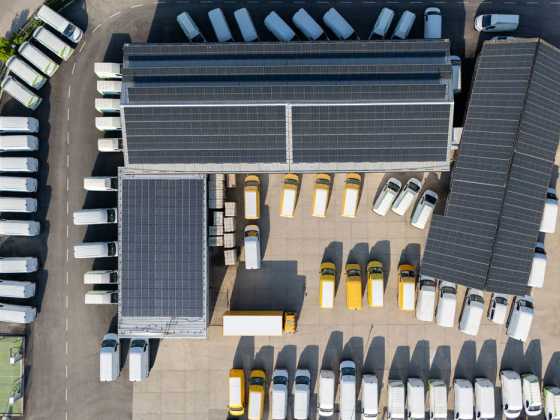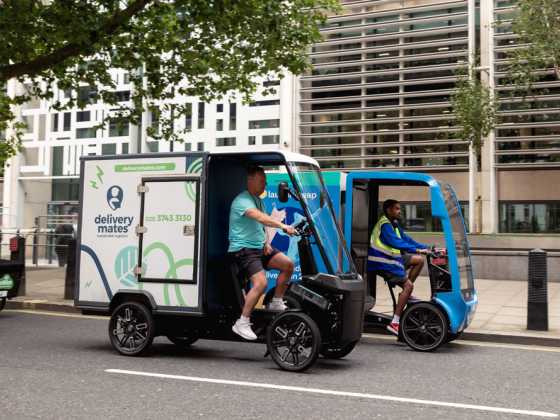Roundtable: Fleet policy for a zero emission future

As fleets are coming to terms with the enduring effects that Covid-19 has had on operations, attention is now turning once again to the long term need to become zero emission. To discuss progress and current challenges, a diverse group of fleets and emission reduction specialists attended GreenFleet’s virtual roundtable on 9 September
Watch the event video here.
One of the few benefits of the lockdown earlier this year is the improvement in air quality in towns and cities across the UK, with NO2 levels in some London roads dropping by 55 per cent according to King’s College London. This has really highlighted the dramatic impact that road traffic has on air quality, and has propelled the agenda for cleaner transportation and zero emission.
The ongoing introduction and extension of low emission zones across the UK has further accelerated the need to align fleet policies around compliance. And the pressure is on; some fleets are preparing for a full ZE Zone in London as early as 2025.
It is clear that lots of planning and analysis is already happening behind the scenes; including fleet analysis, surveying buildings, understanding power requirements and infrastructure, as well as developing new partnerships and supply chains. A theme throughout the roundtable was the need for more flexibility both in terms of fleet policies and operations.
Some fleets, such as the Southern Health NHS Foundation Trust, have already updated their fleet policies whilst others have completed a comprehensive strategy review, in the case of London Ambulance resulting in a fleet plan extending to 2030.
Impacts of COVID 19
Speed of response was of paramount importance at the start of the pandemic with some operators reporting exceptional demand for goods and services. Chris Rutherford, head of fleet strategy at London Ambulance, commented that the service has changed beyond recognition: “The NHS has proved that they can make dramatic changes in a short period of time, decisions are made more agilely, and you can see change happening much more quickly.” The aim is to ensure that this momentum can now be directed towards creating a zero emission fleet. “It is my responsibility to make sure the decisions are the greener options,” Chris added.
Servicing and maintenance was identified as another, less obvious, benefit to having battery electric vehicles on the fleet during lockdown: “EVs take nowhere near the effort that petrol and diesel vehicles do when keeping them on the road,” observed Mick Cook from Babcock International. And the electric vehicles were reported to be much more reliable when out on the road; with less moving parts the full battery EVs have less to go wrong.
On the negative side it was suggested that the inability to test drive vehicles during lockdown may have caused some drivers to defer their decision to switch to electric, preferring to stick with tried and tested ICE or hybrid technology.
PHEVs and fleet policy
Fleets were urged to think carefully about the inclusion of PHEVs within fleet policies. In terms of weight, cost and servicing PHEVs were described by Sara Sloman, energy & infrastructure specialist at Foot Anstey as “the worst of both worlds”.
It was conceded there may remain some limited payload and duty applications where PHEVs may be necessary. Sam Clarke, chief vehicle officer at Gridserve drew some distinction: “From a commercial environment PHEVs have their place [for the shorter term]. From a consumer environment I would see them banned tomorrow as there are BEVs today that are perfectly capable of doing the job.”
Chris Rutherford agreed added: “If you need PHEVs for national resilience or particularly big mileage, they have a place in the here and now. As soon as we can phase them out the better, but with the caveat that there has to be suitable full electric drivetrains in place.”
Specialist vehicles
One of the areas where electric vehicles remain problematic is the ability to power auxiliary equipment. Phoenix Medical runs a fleet of large temperature controlled vans for the delivery of pharmaceuticals to wholesale customers. Maxus is one of the few suppliers of large vans that is able to support refrigerated vehicles, allowing the vehicle battery to also run the cooling through a DC/DC convertor. The company’s Mike Haran explained that it reduces the battery voltage to work with the chiller. The vehicle is available in two battery options, the larger battery can do up to 200 miles or a smaller battery might be sufficient for a light payload.
Vehicle weight is also particularly important for fleets that carry large volumes of equipment with the observation that vehicles need to go on a diet!
Mick Cook agreed, noting that Babcock reserve the BEVs for jobs that have a lighter load. The choice of single or dual rear wheels also impacts the gross vehicle weight, something that event sponsors Maxus were keen to highlight in their 4.05t electric van.
Whilst small electric vans currently have a weight derogation that allows category B licence holders to drive EVs up to 4.25t (higher than the ICE cap of 3.5t), there remained some frustration that the choice of vehicles by payload wasn’t adequate.
Chris Rutherford explained that 7t is too big and 3.5t is too small in terms of payload, the target for London Ambulance is 5t.
The role of telematics
Telematics was a recurring topic, particularly when developing a fleet policy. Phoenix Medical has 80 small vans to be replaced in the next 12 months, and they are hoping to switch to electric. Sam Clarke, who founded the all-electric delivery service Gnewt Cargo explained : “Telematics is an extremely useful tool to help understand not only what vehicles are doing now, but also what they are capable of doing moving forward. Find the low hanging [BEV] fruit and implement that straight away with a view to improving the fleet over time.”
It is important to understand not only what the vehicles are doing when on the road; for electric vehicles the time spent off the road will also help inform the recharging strategy. Event sponsor Quartix is developing an EV tracker that will launch next year. Amongst other suggestions was providing information on plug-in time and energy transfer were highlighted as valuable features.
When developing a fleet policy consider a mix of vehicle types; a single or two badge policy may limit the choice or availability of vehicles. Sara Sloman highlighted the choice of vehicles is ever growing and it is importance to experience the different vehicles. Leasing is good for this as the market is changing very quickly.
It is vital that fleets understand the data they have, Sara Sloman suggested that telematics providers should invest more time in client care, making sure that fleets are getting the insight they need from the data, beyond equipment, reports and numbers. There needs to be a human side to data. Sean Mahar, head of sales at Quartix agreed: “If the driver understands then you can start bringing around change.”
Employee buy-in
Revising company car policies are a good first step to getting more ultra-low emission vehicles onto a fleet. This can be challenging, as typically ULEVs have a higher P11D value which may lead to these vehicles being pushed into a premium vehicle banding. However, as the range of EVs continues to grow more affordable options are available. The introduction of 0% BIK tax for fully electric vehicles has also really caught the attention of employees, creating a much higher demand for these vehicles.
Martine Smith, Phoenix Medical advised that they are in the process of being reviewing the company car policy with a view to adding more manufacturers. “We are a two badge company, and it hasn’t really worked, and it is not on whole life cost, and that is all being changed,” she said.
It is also important to get employee buy-in for essential business users, with advice to get demo vehicles into the fleet as soon as possible and encourage as many drivers as possible to experience zero emission. “Get some demos in, get a bit of buzz around it and you’ll find pretty quickly that all the hurdles that you are expecting are potentially eased because people will genuinely want a zero emission drive,” advised Chris Rutherford. “They will appreciate the lack of vibration because there is no engine [and] how clean it is to fuel.” There was a strong feeling that once employees have gone electric they refuse to go back.
Many fleet vehicles are based at the employees home. For employees that have access to off-road parking this can work extremely well, as a home charger is relatively cheap to install (typically £500 with the OLEV grant). The employee will need to be reimbursed for the cost of electricity; HMRC currently recommend a payment per mile for full battery electric vehicles and plug-in vehicles and the fleet policy will need to be updated to reflect this.
For employees without off-road parking, access to public charging networks will need to be set up.
Charging infrastructure
Planning the charging infrastructure is essential, and fleets reported being at different stages of the development from initial surveys through to installation. London Ambulance is currently planning a new depot location and the electrical supply capacity (to support DC and AC charging) is a key criteria.
For fleets that operate larger vans for 23 hours per day the need for high-power DC charging (HPC) up to 350kW charging was seen as essential and could get a vehicle with a 100 kWh battery to 80 per cent state of charge in 20 minutes. However the cost to a fleet of installing HPC is prohibitive; instead public charging on new and existing service forecourts is a popular solution.
Gridserve is planning to build up to 100 all electric forecourts across the UK over the next five years; the flagship forecourt is scheduled to open in Braintree, Essex later this year and will feature 12 HPCs. The Gridserve model was received well by the fleets who were keen to understand where these forecourts will be located.
In addition to retailing electricity Gridserve has also unveiled partnerships with household brands including WHSmith and Costa Coffee. Sam Clarke noted: “The irony is that we will welcome petrol and diesel drivers because less than one per cent of vehicles on the road are electric and we want them in to realise that they have got the wrong car!”
Watch the event video here.






